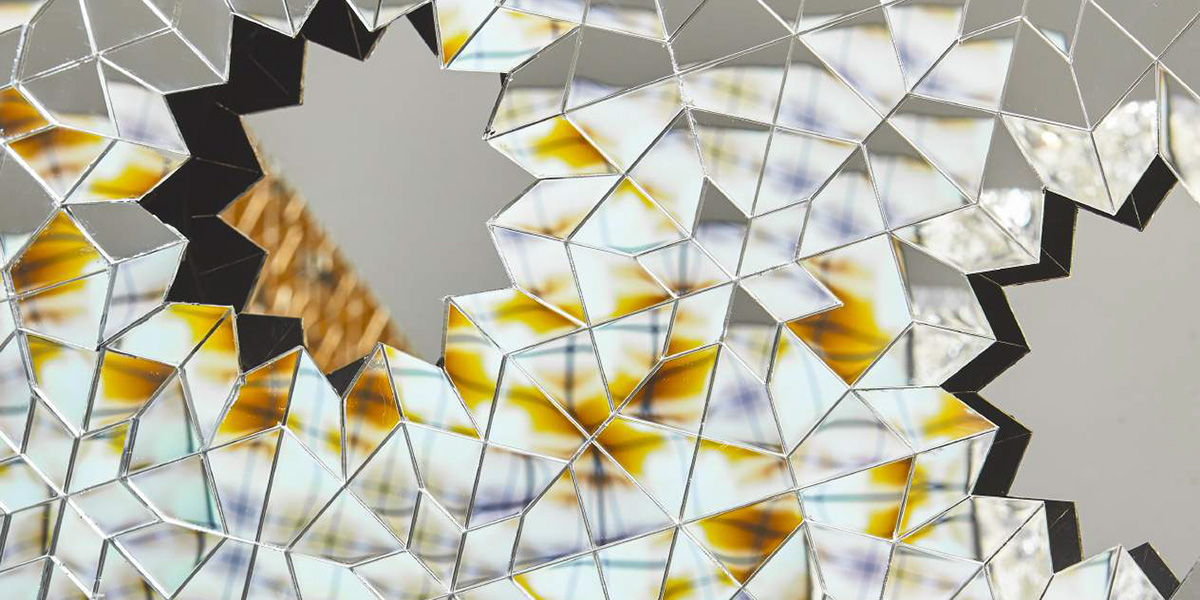California artists use architectural form as window to upend Western paradigms of Middle East culture
SAN FRANCISCO, January 19, 2017 — Beginning in the Middle Ages, architects and artists in the Middle East created beautiful projecting windows screened with intricate latticed designs in wood, known as the mashrabiya. The Fine Arts Gallery at San Francisco State University brings contemporary views of the form in its new exhibition, “Mashrabiya: The Art of Looking Back,” featuring California artists using it to challenge and upend Western paradigms of viewing and representing Middle Eastern and Islamic culture. It will be on display February 18 – March 16.

“Mashrabiya: The Art of Looking Back” features six artists of Middle Eastern heritage: Ala Ebtekar, Sherin Guirguis, Taraneh Hemami, Hayv Kahraman, Sanaz Mazinani and Samira Yamin. It celebrates the establishment of a center for Iranian diasporic studies at SF State in the coming year, an initiative funded by alumna Neda Nobari (B.S., ’84).
“This show gives us a new lens to explore Middle Eastern culture — translating a distinct, ancient architectural form to contemporary multimedia art in provocative ways,” said Professor Mark Johnson, exhibit co-curator and director of the Fine Arts Gallery. “In today’s political divide full of vicious anti-Muslim rhetoric, the brilliant art provides an opportunity to look, reflect and respond.”
Traditionally, the mashrabiya is used to shield the domestic space from the public gaze, while allowing people inside to survey the street below unseen. In this exhibit, the artists’ formal approaches — the use of mirrors, extreme attention to detail — turn the familiar into something new. Some of the questions that arise from the altered or enhanced perception engendered by this art are: Who has the power to look? What social conditions arise from the dynamics of looking and being seen? What is the responsibility of the viewer in this power dynamic?
Highlights
Exhibition highlights include Kahraman’s paintings of her iconic female figures. Dressed in voluminous clothes decorated with geometric patterns, these stylized and near life-sized women engage in unexpected actions and positions. At once active, graceful and contorted, they are sometimes enclosed in abstracted architectural spaces that reference patterns found in 12th-century illuminated manuscripts.
Hemami, an Iran native, has created a site-specific installation, “Patterns,” documenting the ongoing political history of the Middle East. Another work uses found photographs embedded in class to evoke the window of memory.
Mazinani’s video installation “Threshold” (2015) abstracts explosion scenes from Hollywood films to the point where they become unrecognizable. Reflected off mirror panels and screens that reference geometric Islamic architectural ornamentation, war images are multiplied and redoubled to create an uncanny kaleidoscopic effect.
Ebtekar draws from a wide range of traditions that include mystical poetry, science fiction and Persian mythology in his paintings and cutouts. His works are as aesthetically captivating as they are creatively engaged in reframing how the future might be imagined.
Yamin turns pages from Time magazine into literal screens, cutting away at news stories about the Middle East in an act of refusal and revision.
In Guirguis’ “Shubback” (Arabic for “window”) series, her windows are generative as they burst outside their frames with unexpected bright neon colors.
Exhibition curators are SF State Associate Professor Santhi Kavuri-Bauer, SF State and California College of the Arts Lecturer Kathy Zarur, Fine Arts Gallery Associate Director Sharon Bliss and Mark Johnson.
Reception and related events
The opening reception for “Mashrabiya: The Art of Looking Back” takes place Feb. 18 from 1 to 3 p.m. The Fine Arts Gallery is open Wednesdays – Saturdays, 11 a.m. – 4 p.m. Admission is free.
The exhibition will be accompanied by a series of programs including lectures, performances and panel discussions in the Fine Arts Gallery, as well as a related education conference sponsored with the Fine Arts Museums of San Francisco.
The exhibition is supported by the SF State Instructionally Related Student Activities Fund.
More information about this event
Image: Threshold by Sanaz Mazinani (detail). 2015.